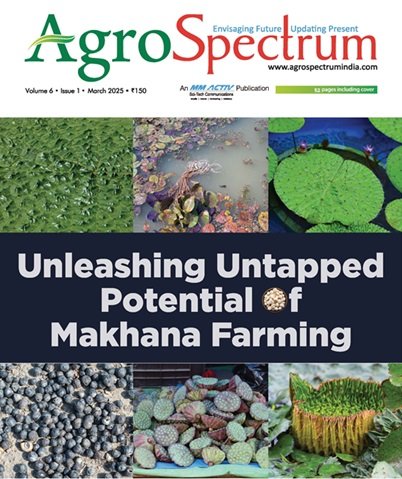Saturday, 22 November 2025

The formation of a Makhana Board will assist farmers in every aspect, including Makhana production, processing, value addition, and marketing. This will help Bihar’s Makhana, considered a superfood and popular part of breakfast in Indian cities, to enter the global market.
By announcing the setting up of the Makhana Board and the National Institute of Food Technology, Entrepreneurship, and Management (NIFTEM) in Bihar, the Union Budget 2025 has made a significant contribution to the development of India’s agricultural economy, especially for high-value commodities like Makhana (foxnuts). The formation of a Makhana Board will assist farmers in every aspect, including Makhana production, processing, value addition, and marketing. This will help Bihar’s Makhana, considered a superfood and popular part of breakfast in Indian cities, to enter the global market.
Makhan, a low-fat, gluten-free snack, has gained popularity among fitness enthusiasts worldwide in recent years. Some have even dubbed it a superfood. The price of makhana on the global wholesale market has significantly increased to around eight times in the last 10 years from around Rs 1,000/kg ten years ago to around Rs 8,000 per kg. An estimated 15,000 hectares are used for makhana farming in India. 1,20,000 metric tonnes (MT) of makhana seeds are produced, and 40,000 MT of makhana are produced after processing. The production at the farmer’s end is projected to be worth Rs 250 crore, and at the trader level, it brings in Rs 550 crore.
Bihar is the leader in makhana production as it contributes about 90 per cent of India’s makhana output. A few other states that cultivate makhana include Assam, Manipur, West Bengal, Tripura, and Odisha. India’s top export destinations for makhana include the United States, United Kingdom, Australia, Bangladesh, and Pakistan, and Gulf countries such as the United Arab Emirates, Qatar, Saudi Arabia, Kuwait, and Oman. Even though makhana is a nutritious cuisine that is high in minerals and nutrients, just 1-2 per cent of it is exported. Approximately, 100 to 150 tonnes of popped makhana are shipped to foreign nations annually.
Speaking on the prospects of business and trade in makhana (Foxnuts), Arun Raste, MD & CEO, National Commodity & Derivatives Exchange Limited (NCDEX) mentioned,’’ The Union Budget 2025 has laid a strong foundation for the growth of India’s agricultural economy, particularly for high-value crops like foxnuts. We welcome the government’s decision to set up a Makhana Board in Bihar that shall strengthen the sector by providing institutional support, enhancing value addition, and boosting farmer incomes. Increased financial support for FPOs and MSMEs will further enable better processing, storage, and value-chain development besides reducing post-harvest losses. With India’s foxnut exports rising by 30 per cent year-on-year, Bihar can drive both domestic and global markets by leveraging modern trading platforms, efficient price discovery, and robust supply chains. For commodity trading, we believe structured markets and hedging tools can empower farmers and traders, ensuring price stability, reducing risks, and unlocking the full potential of the foxnut economy. This may be considered as the first substantial step undertaken towards transforming Bihar into a key agri-business hub. Of course, the collective efforts of policymakers, industry stakeholders, and farmer cooperatives will be instrumental in this endeavour of driving both rural prosperity and India’s position as a premier supplier in global agricultural markets.’’
Farmers in Bihar have cultivated makhana in flood-prone areas, transforming risk into an opportunity. By monsoon water drains, exposing hundreds of black seeds that resemble marble, hence the term “black diamond.” Farmers physically gather seeds from murky waterways during harvest, which is a labour-intensive process. The crunchy, white makhana pearls are collected by hand-popping the seeds after they have been harvested, sun-dried and roasted in clay ovens.
To read more click on:https://agrospectrumindia.com/e-magazine